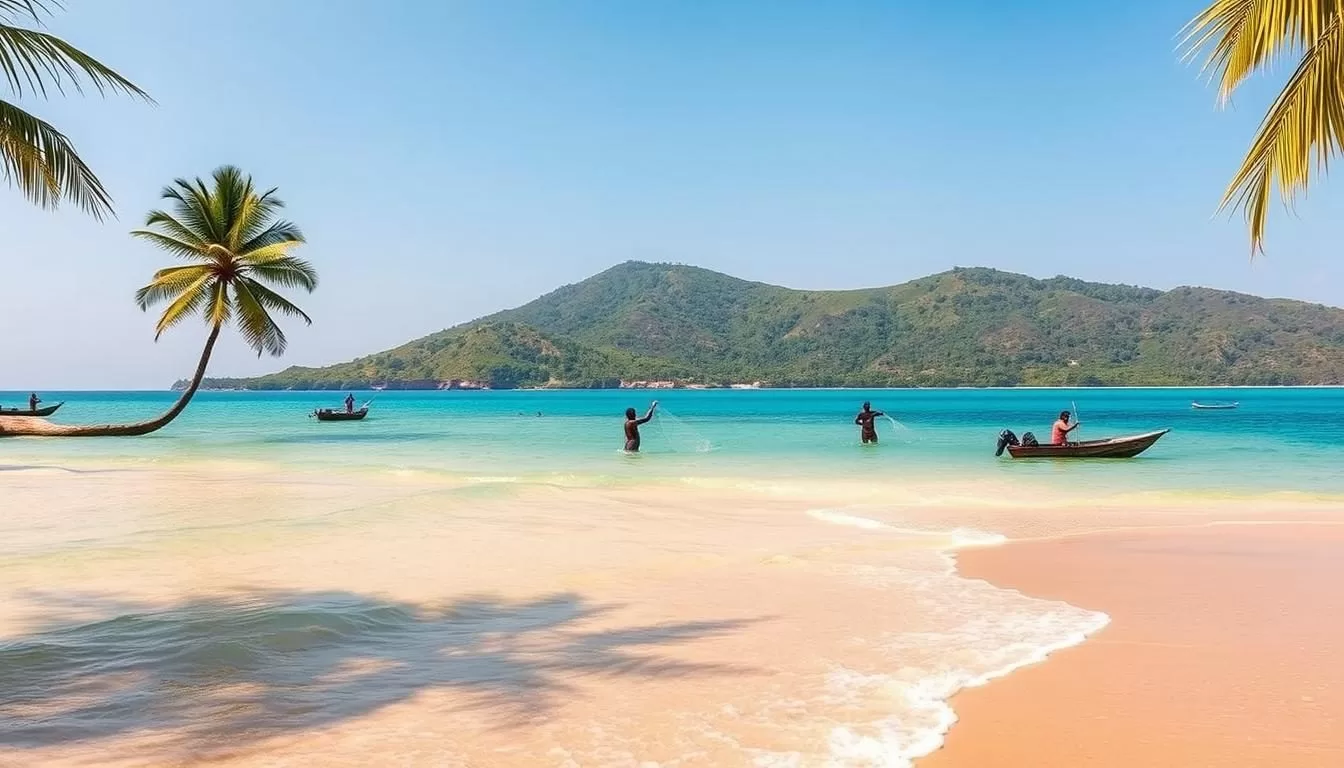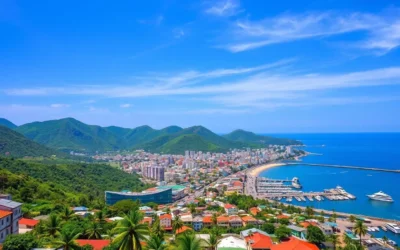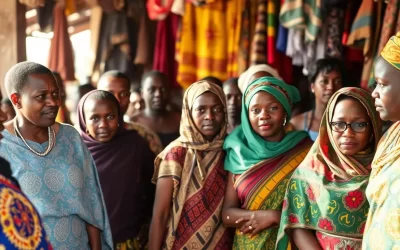✓ Accommodations✓ Flights✓ Rental Cars
Are you ready to explore the hidden gem of West Africa? Sierra Leone is a destination that boasts stunning beaches, lush rainforests, and a vibrant culture that’s increasingly attracting adventurous travelers.
To make the most of your travel experience, it’s crucial to time your visit correctly. The country’s tropical climate has two distinct seasons: hot and wet, and hot, dry, and dusty. Understanding weather patterns is essential for enjoying activities like beach visits, wildlife viewing, and cultural experiences.
This comprehensive guide will help you plan a weather-savvy trip to Sierra Leone by identifying the optimal time to visit. With proper planning, you’ll experience the best of what this incredible destination has to offer.
Understanding Sierra Leone’s Climate
Understanding Sierra Leone’s climate requires a look at its geography and seasonal variations. You need to consider the country’s location on the West African coast to grasp its weather patterns fully.
Geographic Location and Its Impact on Weather
Sierra Leone’s geographic location significantly influences its climate. The country’s position near the equator, with its coastline along the Atlantic Ocean, contributes to its tropical climate. The varied topography, including mountains and coastal plains, also affects local weather conditions. As a result, the climate varies across different regions of the country.
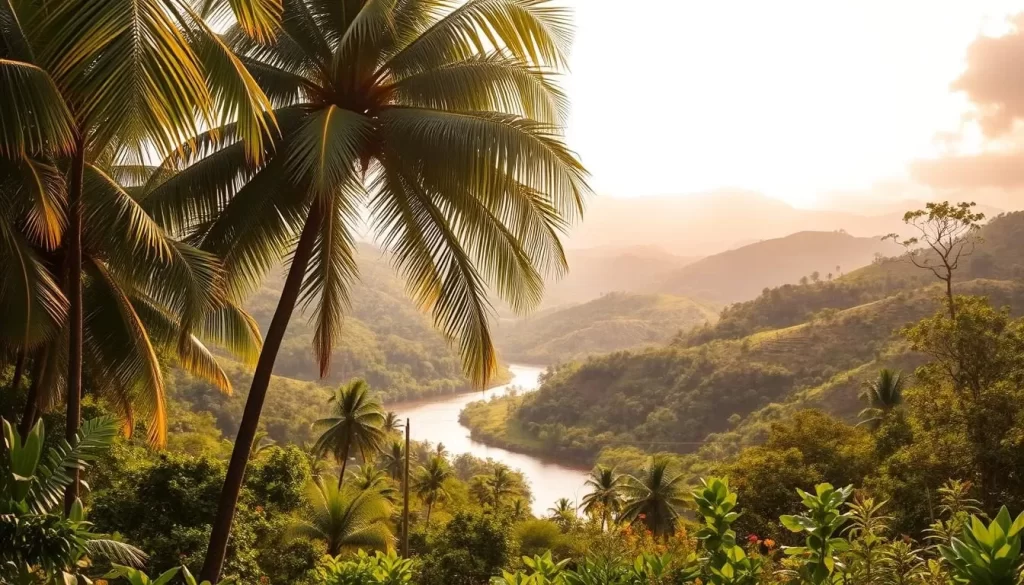
The Two Distinct Seasons: Wet and Dry
Sierra Leone experiences two distinct seasons: the dry season and the wet season. The dry season, which extends from November to May, is characterized by sunny days, clear skies, and lower humidity. This period coincides with the Northern Hemisphere winter, making Sierra Leone an attractive winter destination. The wet season, from May to October, brings heavy rainfall, especially in July and August, and increased humidity. The transition between these seasons is marked by the arrival of the African Monsoon in April or May, bringing the first rains and relief from the heat.
The intensity of both seasons can vary from year to year due to climate change and other factors. Understanding these seasonal variations is crucial for planning a visit to Sierra Leone at the best time.
Sierra Leone: Best Months for a Weather-Savvy Trip
For a weather-savvy trip to Sierra Leone, understanding the country’s seasonal patterns is key to an enjoyable journey. Sierra Leone’s climate varies significantly throughout the year, making some months more suitable for visiting than others.
November to January: The Golden Period
November to January is considered the golden period to visit Sierra Leone. The weather is dry and pleasant, with comfortable temperatures, making it ideal for outdoor activities and sightseeing. The dry conditions and clear skies provide perfect conditions for exploring the country’s natural beauty, from its beautiful beaches to its lush forests.
February to April: Dry but Increasingly Hot
From February to April, Sierra Leone remains dry, but the temperatures start to rise significantly. While it can get quite hot, especially in the afternoons, the dry conditions make it a good time for certain activities. It’s a period when the landscape starts to change, with vegetation beginning to dry out, offering a unique perspective on the country’s scenery.
May and October: Transition Months
May and October are transition months that bridge Sierra Leone’s wet and dry seasons. May marks the beginning of the rainy season, with occasional showers that bring relief from the heat. October, on the other hand, sees the rain starting to subside, leaving the landscape lush and green. These months offer unique advantages, including fewer tourists and lower accommodation prices. In October, the beaches are particularly beautiful as the worst of the rain has passed, but the skies remain blue. Additionally, May hosts the Street Child Sierra Leone Marathon, an award-winning event that visitors can participate in or witness.
When planning your trip to Sierra Leone, consider these periods to make the most of your visit. Whether you’re looking for dry and cool weather or are prepared for the rainy season, there’s a time that’s right for you to visit Sierra Leone and enjoy all it has to offer.

The Dry Season Experience: November to April
The dry season in Sierra Leone is a great time to enjoy the country’s beautiful beaches, wildlife, and outdoor activities. With comfortable temperatures and minimal rainfall, it’s an ideal period for travel and tour activities, making Sierra Leone a fantastic destination.
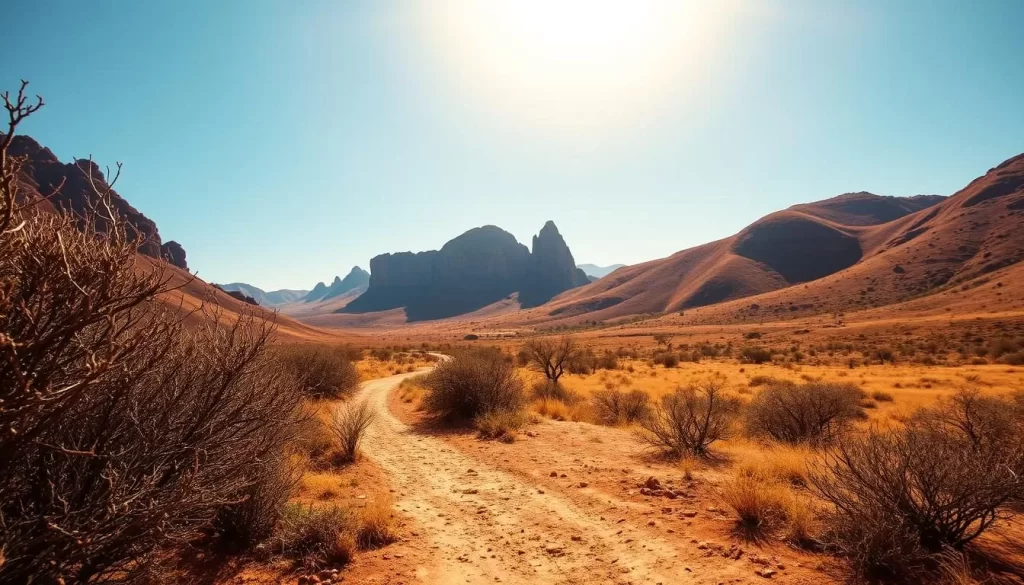
Weather Conditions and Temperatures
During the dry season, Sierra Leone experiences pleasant weather, with temperatures ranging from 25°C to 30°C. The dry conditions make it an ideal time for outdoor exploration.
The Harmattan Effect: December to February
From December to February, Sierra Leone is affected by the Harmattan, a dry and dusty wind blowing from the Sahara Desert. While it can reduce visibility and cause dry skin, the cooler mornings and evenings can be quite pleasant.
Activities Best Enjoyed During Dry Season
The dry season is perfect for various activities:
- Enjoying the beautiful beaches along the peninsula, with calm seas ideal for swimming, sunbathing, and water sports.
- Exploring wildlife in places like Tiwai Island Wildlife Sanctuary and Outamba-Kilimi National Park, where animals gather around water sources.
- Going on hikes and treks, particularly in the Loma Mountains, including Mount Bintumani, West Africa’s highest peak.
- Experiencing cultural events and festivals, such as the Lantern Festival.
- Visiting remote areas and rural communities, as road conditions improve during the dry season.
Navigating the Wet Season: May to October
The wet season in Sierra Leone, spanning from May to October, brings with it unique challenges and opportunities for travelers. Understanding what to expect during this period is crucial for planning a successful trip.
Rainfall Patterns and Regional Variations
During the wet season, Sierra Leone experiences significant rainfall, with regional variations in precipitation patterns. The rain is not continuous throughout the day; instead, it often comes in heavy downpours, typically in the afternoons or evenings. Daytime temperatures range from 25-28°C (77-82°F), while nighttime temperatures can dip to 18-22°C (64-72°F). Although it might seem cooler, the increased humidity can make the weather feel uncomfortable.
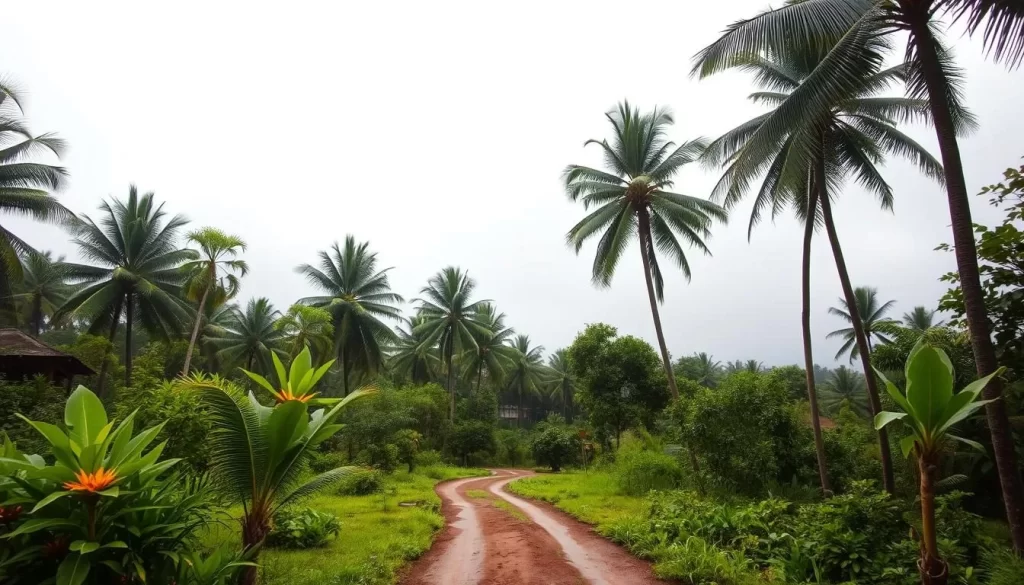
July and August: Peak Rainy Months
July and August are the peak rainy months in Sierra Leone, with the most substantial rainfall occurring during these periods. Travelers should be prepared for potentially severe weather conditions, including flash flooding and difficult road conditions, especially on unpaved roads.
What to Expect During the Rainy Season
When traveling to Sierra Leone during the wet season, you should be prepared for several challenges. The heavy rainfall can lead to transportation difficulties, including flight delays and limited road accessibility. Additionally, the increased humidity and standing water can result in a higher prevalence of mosquitoes, thereby increasing the risk of mosquito-borne diseases like malaria.
Despite these challenges, there are some advantages to visiting Sierra Leone during the wet season. The landscape becomes lush and green, and with fewer tourists, prices for accommodations and tourist services may be lower. It’s also a good time to experience the local culture without the crowds.
| Aspect | Wet Season (May to October) |
|---|---|
| Weather | Heavy rainfall, high humidity, temperatures between 18-28°C |
| Transportation | Limited options, potential flight delays, difficult road conditions |
| Health Risks | Increased risk of mosquito-borne diseases like malaria |
| Tourist Experience | Fewer tourists, lower prices, lush green landscapes |
Regional Weather Variations Across Sierra Leone
As you explore Sierra Leone, you’ll notice that the weather differs substantially across various areas. The country’s diverse geography, ranging from coastal regions to mountainous areas, significantly influences its climate.
Coastal Areas vs. Inland Regions
The coastal regions of Sierra Leone tend to have a more moderate climate compared to the inland areas. The ocean’s influence helps regulate temperatures, keeping them relatively stable throughout the year. In contrast, inland regions experience more extreme temperature fluctuations. For instance, during the dry season, inland areas can become quite hot, while coastal areas remain relatively mild.
Mountain Regions and Their Unique Climate
Mountain regions, such as the Loma Mountains and Tingi Hills, have a distinct climate compared to the rest of the country. At higher elevations, temperatures are significantly cooler, especially at night, dropping to as low as 15-18°C (59-64°F). If you’re considering visiting Sierra Leone to hike Mount Bintumani or any other peak, be aware that temperatures may dip even further during the night. The mountain areas often experience different rainfall patterns, with more frequent mist and fog even during the dry season.
The best time to explore these mountain regions is typically from November to February when the trails are dry, and the vegetation remains green. However, during the peak rainy season, trails can become dangerous or impassable, so it’s essential to plan your visit accordingly.
Planning Your Activities Around the Weather
To make the most of your visit to Sierra Leone, it’s essential to plan your activities according to the weather conditions. The country’s climate varies significantly throughout the year, impacting the enjoyment and accessibility of various experiences.
Beach Experiences and Best Timing
Sierra Leone’s beaches are a major draw for tourists. The best time to enjoy these is during the dry season, from November to April, when the weather is dry and sunny. Popular beaches like Lumley Beach and Tokeh Beach offer a relaxing atmosphere, with the dry season being ideal for swimming, sunbathing, and beach activities.
Wildlife Viewing and National Parks
For tour enthusiasts, Sierra Leone’s national parks are a must-visit. The dry season is also the best time for wildlife viewing as animals tend to congregate around water sources, making them easier to spot. Places like the Tacugama Chimpanzee Sanctuary and the Outamba-Kilimi National Park offer unique wildlife experiences.
Cultural Events and Festivals by Season
Sierra Leone is rich in cultural heritage, with various events and festivals taking place throughout the year. The Lantern Festival, for instance, is a highlight, featuring elaborate lantern processions through Freetown’s streets. Music festivals like Ma Dengn showcase the country’s vibrant musical traditions. Many cultural celebrations are scheduled during the dry season for practical reasons, making it an excellent time to experience the local culture. Additionally, places like Rogbonko Village Retreat offer cultural immersion opportunities year-round, though some activities may be affected by seasonal conditions.
- The Lantern Festival features lantern processions through Freetown.
- Ma Dengn music festival showcases local artists and contemporary music.
- Rogbonko Village Retreat offers cultural immersion experiences.
- Street Child Sierra Leone Marathon combines sports with cultural experiences.
By planning your visit according to the weather and cultural calendar, you can have a more enriching and enjoyable experience in Sierra Leone.
Practical Travel Considerations
When planning your trip to Sierra Leone, it’s essential to consider practical aspects that can make or break your travel experience. Understanding the country’s climate, geography, and local conditions will help you prepare accordingly.
Health Precautions by Season
Your health and safety should be a top priority when traveling to Sierra Leone. During the dry season (November to April), it’s crucial to protect yourself from the sun and dehydration. Use high-SPF sunscreen, wear protective clothing, and stay hydrated. In the wet season (May to October), the risk of malaria and other waterborne diseases increases, so take necessary precautions like using insect repellent and antimalarial medication.
Transportation Challenges During Wet Season
The wet season can significantly impact transportation in Sierra Leone. Roads may become impassable, and flooding can occur. To navigate these challenges, consider using 4×4 vehicles or local transportation services that are familiar with the terrain. Always check the weather forecast before embarking on a journey and plan for contingencies.
Packing Tips for Different Seasons
Packing the right gear is vital for a comfortable trip. For the dry season, include lightweight, breathable clothing, sun protection, and a light jacket for cooler evenings. During the harmattan period (December to February), add dust masks, moisturizer, and eye drops to your list. For the wet season, quick-dry clothing, waterproof jackets, and stronger insect repellent are must-haves.
| Season | Essential Items |
|---|---|
| Dry Season (Nov-Apr) | Lightweight clothing, sun protection, light jacket |
| Harmattan (Dec-Feb) | Dust masks, moisturizer, eye drops |
| Wet Season (May-Oct) | Quick-dry clothing, waterproof jacket, stronger insect repellent |
By being informed and prepared, you can make the most of your trip to Sierra Leone. Make sure to check the latest travel advice and information before your trip to ensure a smooth and enjoyable journey.
Conclusion
Whether you’re looking for pristine beaches, vibrant culture, or exciting wildlife, Sierra Leone’s climate plays a significant role in shaping your travel experience. The country’s weather patterns can be broadly categorized into two distinct seasons: the dry season from November to April, and the wet season from May to October.
The dry season, particularly from November to January, is considered the best time to visit Sierra Leone for most travelers due to its favorable weather conditions. However, each season offers unique experiences, making Sierra Leone a versatile destination that can be enjoyed year-round with proper planning.
As you plan your adventure in Sierra Leone, consider your specific interests and priorities. Wildlife enthusiasts, beach lovers, and cultural explorers may find different periods optimal for their pursuits. To make sure you have a memorable trip, it’s advisable to consult with local tour operators or travel specialists who can provide up-to-date information on seasonal conditions and help create a customized guide for your journey.
In conclusion, Sierra Leone is a travel destination that promises an enriching experience, with its diverse attractions and warm hospitality. By understanding the climate and planning accordingly, you can have a truly unforgettable experience in this beautiful West African nation, visit Sierra Leone at the right time for an adventure of a lifetime.
The above is subject to change.
Check back often to TRAVEL.COM for the latest travel tips and deals.
